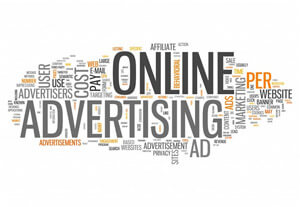A Guide to Online Advertising Platforms: Powering the Digital Marketing Ecosystem
A Guide to Online Advertising Platforms: Powering the Digital Marketing Ecosystem
Blog Article
In the digital era, online advertising platforms have grown to be essential tools for businesses seeking to connect with audiences, drive traffic, and generate revenue. These platforms provide the infrastructure, tools, and analytics that enable advertisers to make, manage, and optimize campaigns through the web. With the proper strategy, companies can get to the right audience with the right time — often in real time.
What Are Online Advertising Platforms?
Online advertising platforms are digital services or software that permit businesses to place ads online. They function as intermediaries between advertisers and digital spaces where ads are displayed, like websites, social websites feeds, mobile apps, and appearance engine results.
These platforms typically provide:
Ad creation tools
Targeting options (demographics, interests, behavior, etc.)
Performance tracking and analytics
Bidding systems for ad placement
Top Online Advertising Platforms
Here are some of the most popular and traditionally used platforms:
1. Google Ads (Search + Display)
Type: Search, Display, Shopping, Video
Best for: Reaching users actively trying to find products/services
Key Features: Keyword targeting, performance tracking, responsive ads
Google Ads is among the most dominant platform globally, allowing businesses to market on Google's google search, YouTube, Gmail, along with a vast network of partner websites over the Google Display Network.
2. Facebook Ads (Meta Ads)
Type: Social Media
Best for: Audience engagement, brand awareness, retargeting
Key Features: Demographic and interest targeting, retargeting, A/B testing
Meta's ad platform powers Facebook, Instagram, Messenger, and Audience Network. It’s well suited for visually driven campaigns and provides robust audience segmentation.
3. YouTube Ads
Type: Video
Best for: Brand awareness, product demonstrations
Key Features: Skippable and non-skippable ads, in-stream ads, targeting by behavior and interests
As part of Google Ads, YouTube supplies a powerful platform for storytelling and reaching users via video content.
4. Microsoft Ads (formerly Bing Ads)
Type: Search
Best for: Reaching users on Bing, Yahoo, and partner networks
Key Features: Lower competition than Google, cost-effective for certain niches
Microsoft Ads supplies a similar model to Google Ads however with less competition, often leading to lower CPC (cost-per-click).
5. LinkedIn Ads
Type: Professional Social Media
Best for: B2B marketing, job recruitment, professional services
Key Features: Job title, industry, company targeting
LinkedIn is the go-to platform for B2B advertisers, enabling highly targeted campaigns depending on professional criteria.
6. TikTok Ads
Type: Short-Form Video
Best for: Engaging younger audiences, viral marketing
Key Features: Native video ads, branded effects, influencer collaboration
TikTok has emerged as a major force in social media marketing advertising, offering high engagement rates and unique ad formats.
7. Amazon Ads
Type: E-commerce
Best for: Product advertising for online retailers
Key Features: Keyword targeting, sponsored products, brand storefronts
Amazon Ads allows sellers to promote products entirely on the platform, increasing visibility and sales through sponsored listings.
Choosing the Right Platform
Selecting the best platform is determined by various factors:
Business Type Recommended Platforms
B2C Retail Facebook, Instagram, Google, TikTok
B2B Services LinkedIn, Google, Microsoft Ads
Startups & Apps Google Display, Meta, YouTube
E-commerce Amazon, Google Shopping, Meta
Local Businesses Google Local Ads, Facebook, Yelp
Other considerations include budget, audience, content format, and advertising goals (awareness vs. conversions).
Emerging Trends in Online Advertising Platforms
AI-Powered Automation – Platforms are employing machine learning to automatically optimize bidding, ad placement, and targeting.
Cross-Channel Campaigns – Integration across platforms helps deliver a regular brand message on multiple touchpoints.
Privacy-First Targeting – With the decline of third-party cookies, platforms are shifting to first-party data and contextual advertising.
Self-Serve Platforms – Many platforms now offer easy-to-use interfaces for small business owners and startups.
Online advertising platforms have democratized marketing, giving businesses of all sizes use of powerful tools for growth. Whether it's search-based targeting through Google, social media marketing engagement via Facebook and Instagram, or video ads on YouTube and TikTok, each platform offers unique advantages. Understanding their strengths and aligning these with business goals is the key to some successful internet advertising strategy.